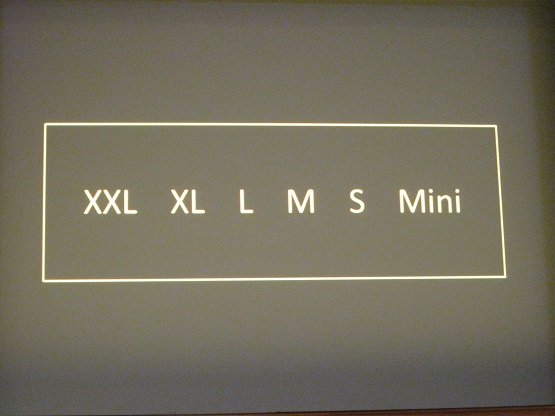“You’ve got a cool product, but nobody understands it. You think it’s simple, but customers don’t. They compare your products with those that are nothing like it.”
Ouch. From page 1 of Obviously Awesome: How To Nail Product Positioning So Customers Get It, Buy It, Love It, it was clear that the team at Business of Software needed to read April Dunford’s new book. The book is April’s thesis on Product Positioning: why you need to think about it, the 5 components of effective positioning, and a 10-step positioning process.
As an executive consultant, April Dunford brings 25 years of marketing experience to the table with this book. Her CV is impressive: VP of Marketing at several successful high-growth startups, an executive at 3 global tech giants, and 16 products launched to market over her career. She’s been consulting for 10 years, and is now a sought after speaker – you can catch her on her UK Book Launch Tour this July, or in Boston this September at Business of Software Conference USA 2019.
There’s lots of wisdom on offer in Obviously Awesome. Here are our 5 key takeaways from the book.
Learn how great SaaS & software companies are run
We produce exceptional conferences & content that will help you build better products & companies.
Join our friendly list for event updates, ideas & inspiration.
1 – Positioning is the difference between ‘So?’ and ‘Wow!’
“Position your product like your company depends on it (hint: it does).”
It doesn’t matter how brilliant your product is, or how well it solves your customers’ problems – if it’s not positioned well, potential customers are going to sail by without so much as a second glance. If it looks irrelevant, boring, or a poor imitation of a competitor, you’ll leave people saying ‘So?’.
Good positioning can make the same product seem attractive, different, and special. Find the features that make your product special, and use them as the main thrust of your positioning. Your product’s USPs will help differentiate it in the market, and move the ‘So?’ to a ‘Wow!’.
April uses a great example of this. You’re probably aware of Cake Pops – delicious balls of cake-y goodness that sit atop a stick for quick and easy on-the-go cake consumption for adults who just don’t have time to eat cake like normal people.

If Cake Pops had been marketed as ‘Small Ball of Cake on a Stick’, I doubt they’d have taken off like they have done. It focuses on the wrong things (I don’t want my cake to be small… why would cake be round? What’s with the stick?). But ‘Cake Pop’, that’s great – like a lollipop, but a cake. Easy to eat on the go, a quick treat, and it tickles the childhood nostalgia part of your brain. Positioning changed the ‘So?’ to ‘Wow!’.
This also reminds me of the amazing talk by Young Me Moon which we were not allowed to record sadly. I took a few pictures – this one shows how when Mini entered the US market at a time when everyone wanted to drive huge 4x4s, their campaigns focused and celebrated the unique differences the Mini had.
2 – Don’t be afraid to go narrow
“Your best-fit customers hold the key to understanding what your product is.”
When marketing a product, the temptation can be to throw the customer net wide. The more people you market to, the more people use your product, right? If you have a broad church of customers, the temptation goes up – let’s keep them all happy and focus on all of them, regardless of whether they’re really the right customers for us – especially if you’re struggling to get customers. Just get anyone using the product, it doesn’t matter if they’re best-fit customers or not.
April writes that focusing on your happiest customers can help you identify your best-fit customer profile. Find out what they love about your product, and then use that to position your product. These are customers who understood your product quickly, and happily spend money with you. Make it clear that your product solves the problems which that segment of your customers face, and you’ll be positioned well for other best-fit customers to find you!
“Taken as a whole, the customer base often seemed very heterogenous and it was hard to see a pattern in why they chose a product, who they viewed as competitors and what their favourite features were. However, if we sorted out just the best-fit customers, we could clearly see patterns.”
(This is also echoes what Superhuman Rahul Vohra talked about in his Product-Market Fit Engine talk last year.
3 – Positioning is a team sport
“Marketing can’t “own” positioning, in the same way marketing can’t “own” the overall business strategy. It’s simply too broad and too important to live in one silo of the overall company.”
To make positioning effective, it needs to be reflected across the organisation. If it were owned and set by marketing alone, problems can quickly occur. That’s because positioning is a business strategy exercise. It’s something that needs to be adopted across the organisation – marketing, sales, business development, customer success, product & development, the lot. Not only that, it should be set by a team from across the organisation. Different functions in the business are going to have different perspectives and insights on the best-fit customer – don’t miss out on that by letting marketing “own” it.
Imagine if Marketing here at BoS started selling our conference to attendees as an ‘Exclusive Founders Retreat’, while Sales were telling Supporters that we were a ‘Massive Exhibition with a couple of talks’. We might do alright this year, but our repeat sales would take a big, well-deserved hit. Similarly, if Marketing at BoS were to set the Positioning, we’d miss out on things that only Sales and Customer Success knows from their perspective. Positioning impacts the whole team across the business, and everyone needs to sing from the same co-written hymn sheet.
4 – Don’t be afraid to mention your competitors
“The features of our product and the value they provide are only unique, interesting and valuable when a customer perceives them in relation to alternatives.”
It can be tempting to not mention your competitors out of fear – “If we talk about our competitors, maybe our customers will go and use them instead”. April suggests that by majoring on what makes your product unique, you can draw in more best-fit customers who appreciate the things that set your product apart from your competitors.
Not only that – you should find out what your best-fit customers perceive as your competitors. If your customers didn’t use your solution, what would they do instead? It might not be what you thought it was. We learned that a lot of our best-fit customers would replace BoS with books, meetups, and online communities – not other conferences. An interesting discovery, and one that is helping us to focus on what makes BoS Conferences unique in our market – it has also changed the way we think about sponsorship and supporters.
5 – Expect to need to change your positioning
“Both products and markets change over time. Companies need to regularly check in on their positioning and adjust it as technology and landscapes evolve.”
Products come and go, markets change, large competitors can move into your niche. Positioning is an ongoing conversation amongst your team. Put the hard work in now to set yourself up well, and then tweak it regularly to make sure you’re sat at the right place in the market. Is how you positioned the product working? What could you do to make your product’s unique features stand out better?
April recommends checking in on your positioning every 6 months, or after a major event that could change the competitive landscape in your market. She also says that new competitors don’t necessarily mean that your positioning needs to change – what matters is your customers’ perceptions, not yours. Check back in with your best-fit customers, and ask how they see the situation. If they switch to a competitor product, ask them why.
April Dunford is touring the UK to celebrate the launch of Obviously Awesome: How To Nail Product Positioning So Customers Get It, Buy It, Love It. Click below to join her for an evening with a talk from April, Q&A, and networking.
1st July - Cambridge 2nd July - London
Learn how great SaaS & software companies are run
We produce exceptional conferences & content that will help you build better products & companies.
Join our friendly list for event updates, ideas & inspiration.


